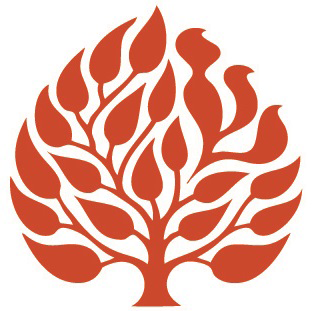Our Very Life

One time it happened that a priest poured the libation on his feet, and all the people pelted him with their etrogim. (M. Sukkah 4:9)
The above Mishnah describes a scandalous episode set on the festival of Sukkot during the Second Temple period. The previous mishnah explains that on each day of the festival there was a ceremony where the priests would fill a golden flask with water from the Shiloah spring and bring it to the Temple to offer as a sacrifice on the altar. The special sacrifice of water was only offered on Sukkot. All other days of the year wine would be poured on the altar.
The Rabbis explain that the water libation was offered as a supplication to God to provide rain in the upcoming year. Mishnah Rosh Hashanah 1:2 teaches that on Rosh Hashanah all the inhabitants of the world come before God for judgement, and on Sukkot, God determines the amount of rain that will fall in the upcoming year. The water libation serves to entreat God to provide sufficient precipitation during the rainy season, which begins immediately after Sukkot. We can imagine a huge crowd of people who are present during the joyous festival anxiously awaiting the water libation ceremony. To their great shock and dismay the priest desecrates the sacrifice by pouring the water on his feet. The enraged crowd responds by hurling their etrogim at the high priest. The Tosefta, a contemporaneous rabbinic text, adds that the force of the attack was so great that it damaged the horn of the altar.
Even if we doubt the historicity of the episode described in the Mishnah (indeed, the First Century Jewish historian Josephus describes different circumstances surrounding the etrog attack), this account indicates that the water libation was a major point of strife during the Second Temple period. The Mishnah’s description of the incident reflects the Rabbis’ acute awareness that many questioned the veracity of the water libation rite because of its lack of Biblical origins. The priest described in our mishnah represents the position of the Sadduccean sect of the Second Temple period, who controlled the Temple worship and utterly rejected any laws or traditions not explicitly stated in the Torah. The crowd gathered at the Temple align themselves with the Rabbis and demand the performance of the ancient rite to ensure their safety and an abundant harvest in the year to come.
The two main commandments associated with the festival of Sukkot are taking the four species and spending the seven days of the holiday in the temporary dwelling of the sukkah (Lev. 23:33–43). There is no biblical text which makes explicit mention of the water libation. In fact, we have no evidence outside of rabbinic sources that prove that the rite ever took place in the Temple. Despite the lack of biblical evidence, some sages attempt to find an anchor for the rite in Numbers 29, which describes the sacrifices offered during the festival of Sukkot. The repetitive description includes three extraneous letters, mem, yud, mem, which spell the Hebrew word for water, mayyim. These sages argue that these letters serve as a hint for the biblical origins of the water libation. Other rabbinic sources categorize the water libation ceremony as halakhah lemoshe mi-Sinai—a tradition which dates back to the Revelation at Sinai without any explicit mention in the text. On the other hand, there are sages who argue that the rite does not have its origins in the Torah but rather is an innovation of the Prophets Samuel and King David. The latter position lessens the status of the ritual because it was not revealed at Sinai.
The Talmud Yerushalmi Sukkah (4:1, 54b) juxtaposes these two positions and expresses surprise at the disagreement between them. How could it be possible that the Sages would disagree about the origins of the water libation, whose legitimacy was already a point of contention? Rabbi Levi, a third-century rabbinic Sage, explains that there is in fact no disagreement between the two positions. The water libation was a tradition handed down from Sinai, but it was forgotten until the Prophets restored the ceremony. The Yerushalmi goes on to explain that the Prophets were able to revive the forgotten tradition not because of a miracle or a sign from God but because of their unwavering dedication to Torah study.
The Yerushalmi passage concludes with a midrash based on a verse from the end of the book of Deuteronomy (32:47) which succinctly summarizes the import of Moses’s teaching to the children of Israel, “For this is not an empty thing for you: it is your very life.” The Rabbis teach that the Torah will indeed seem empty for those who do not struggle with it. The Torah can only be “your very life” if you exert yourself to make it meaningful. The Yerushalmi teaches that intense engagement with Torah study and the traditions of the past is akin to experiencing the moment of Revelation.
Many of us encounter passages in the Torah and teachings in our tradition which we find problematic or difficult to align with our modern perspectives. The Rabbis teach us that if we simply dismiss those elements we render our entire tradition empty. The Torah demands of us to struggle, challenge ourselves, and engage with our tradition and continue to make it relevant, because it is “our very life.”
The publication and distribution of the JTS Commentary are made possible by a generous grant from Rita Dee (z”l) and Harold Hassenfeld (z”l).



